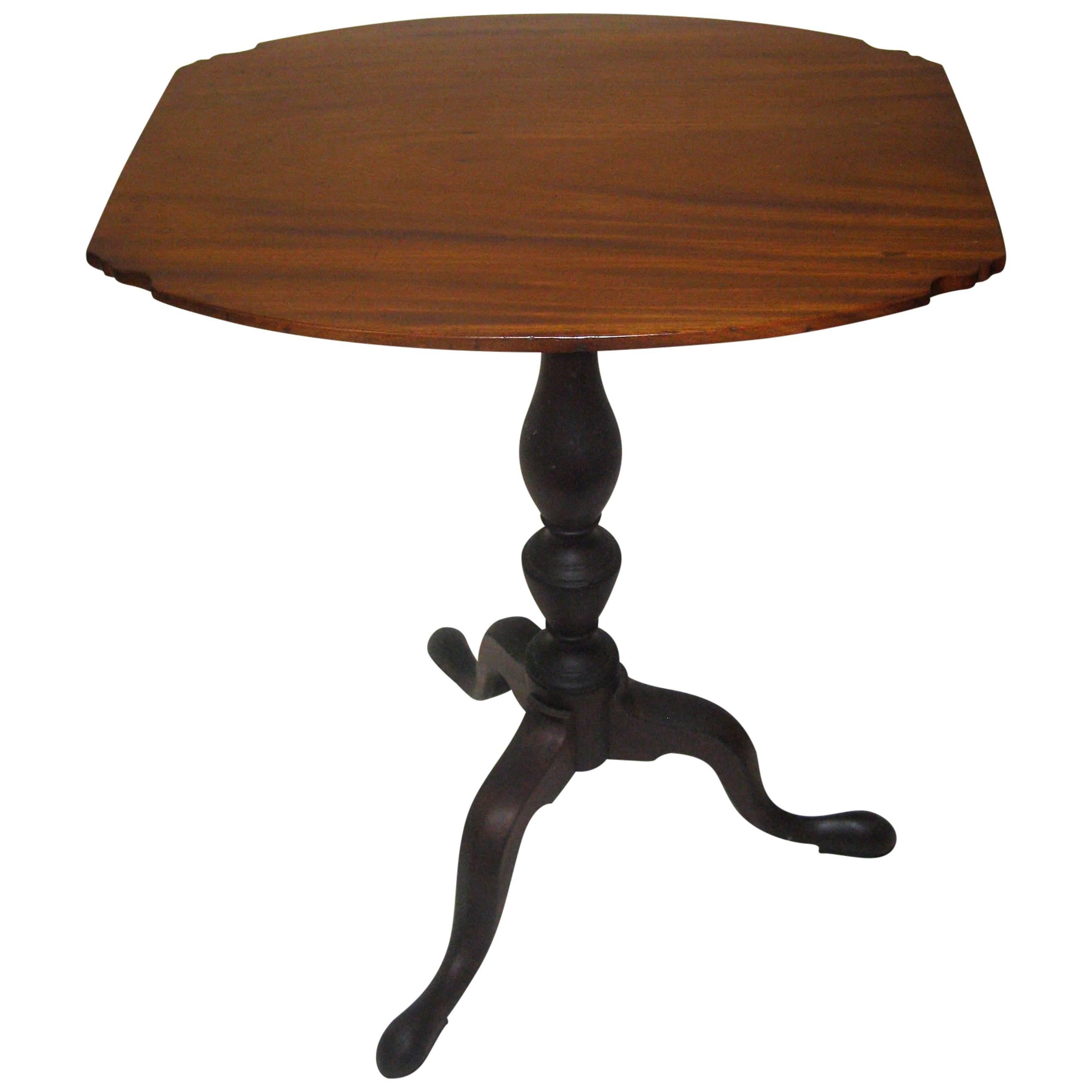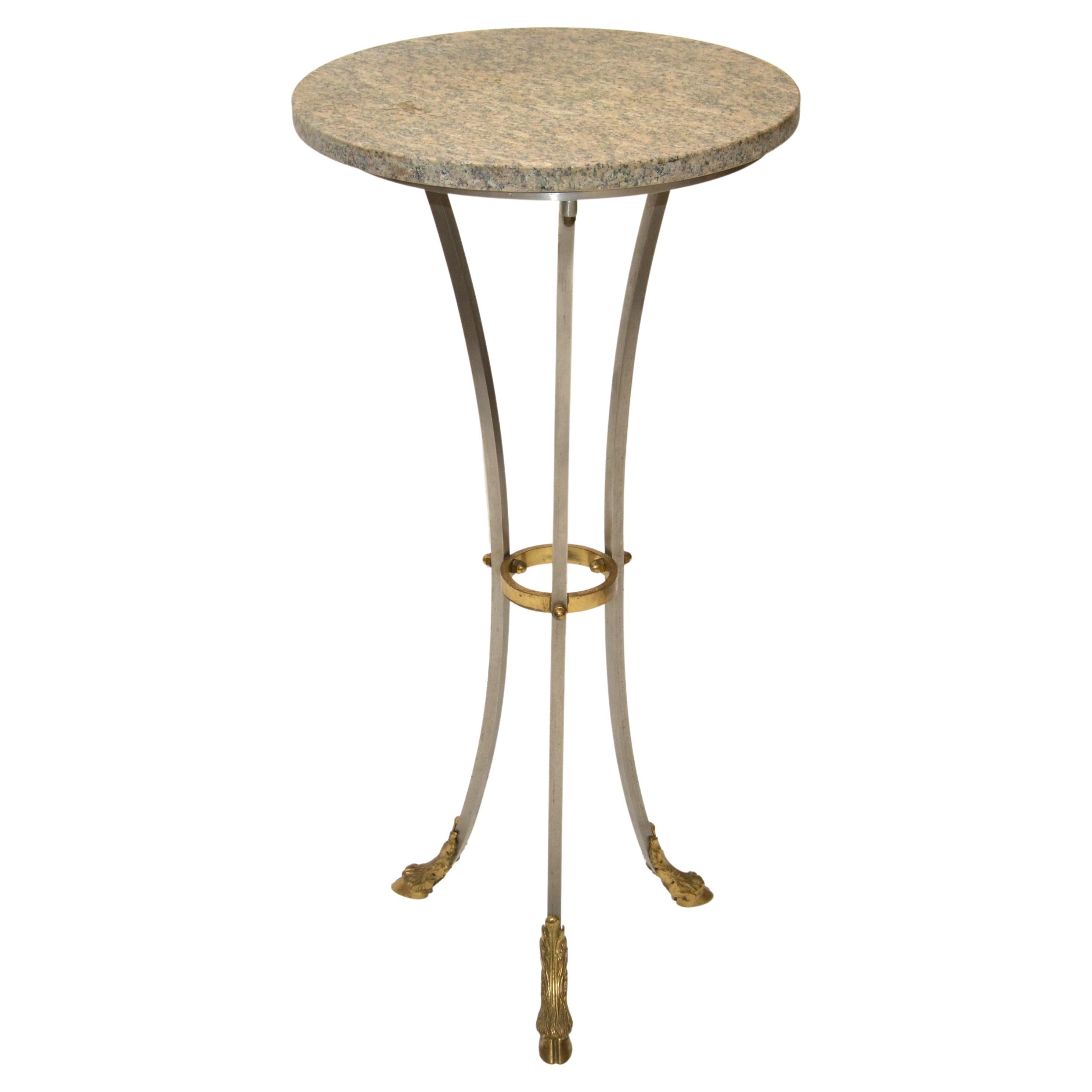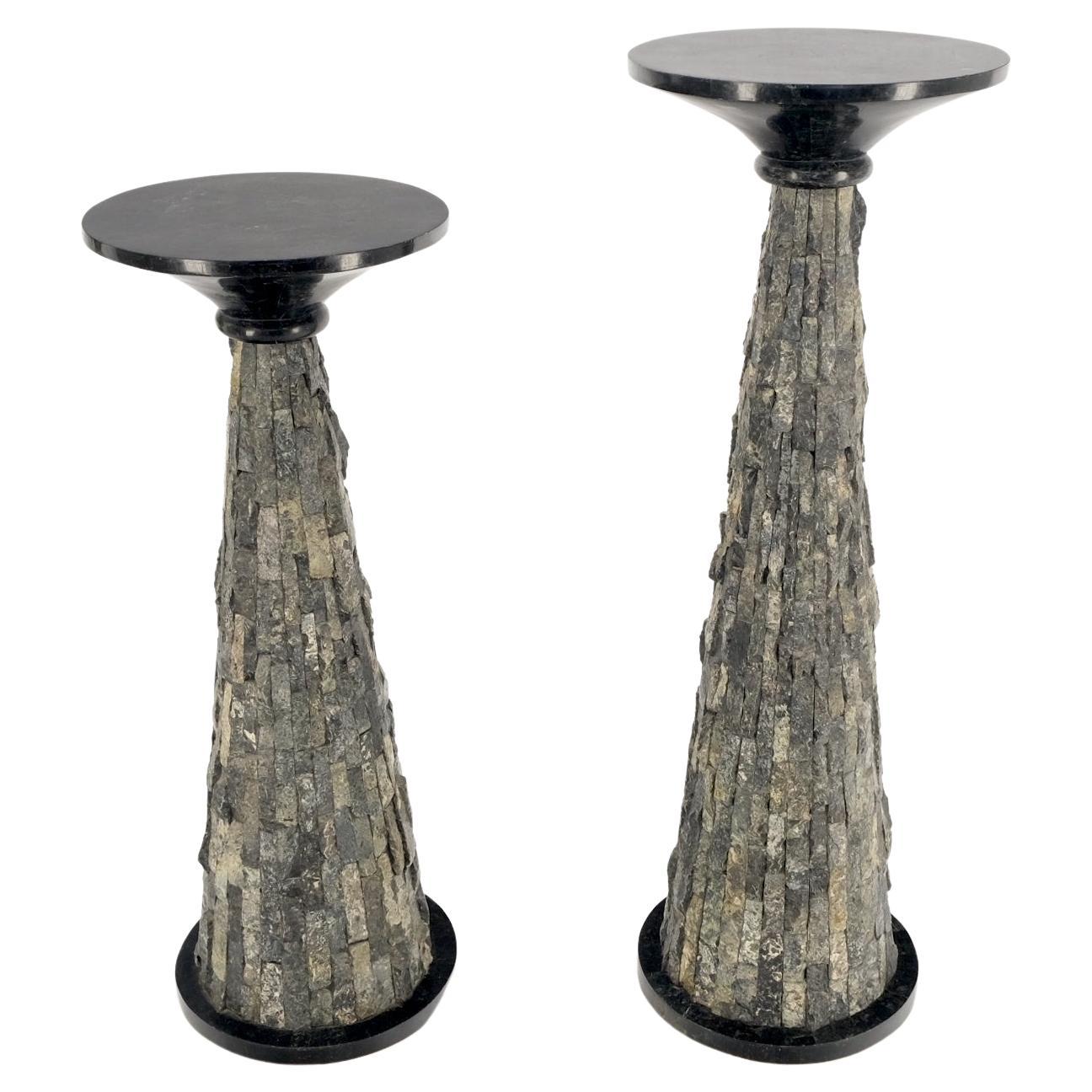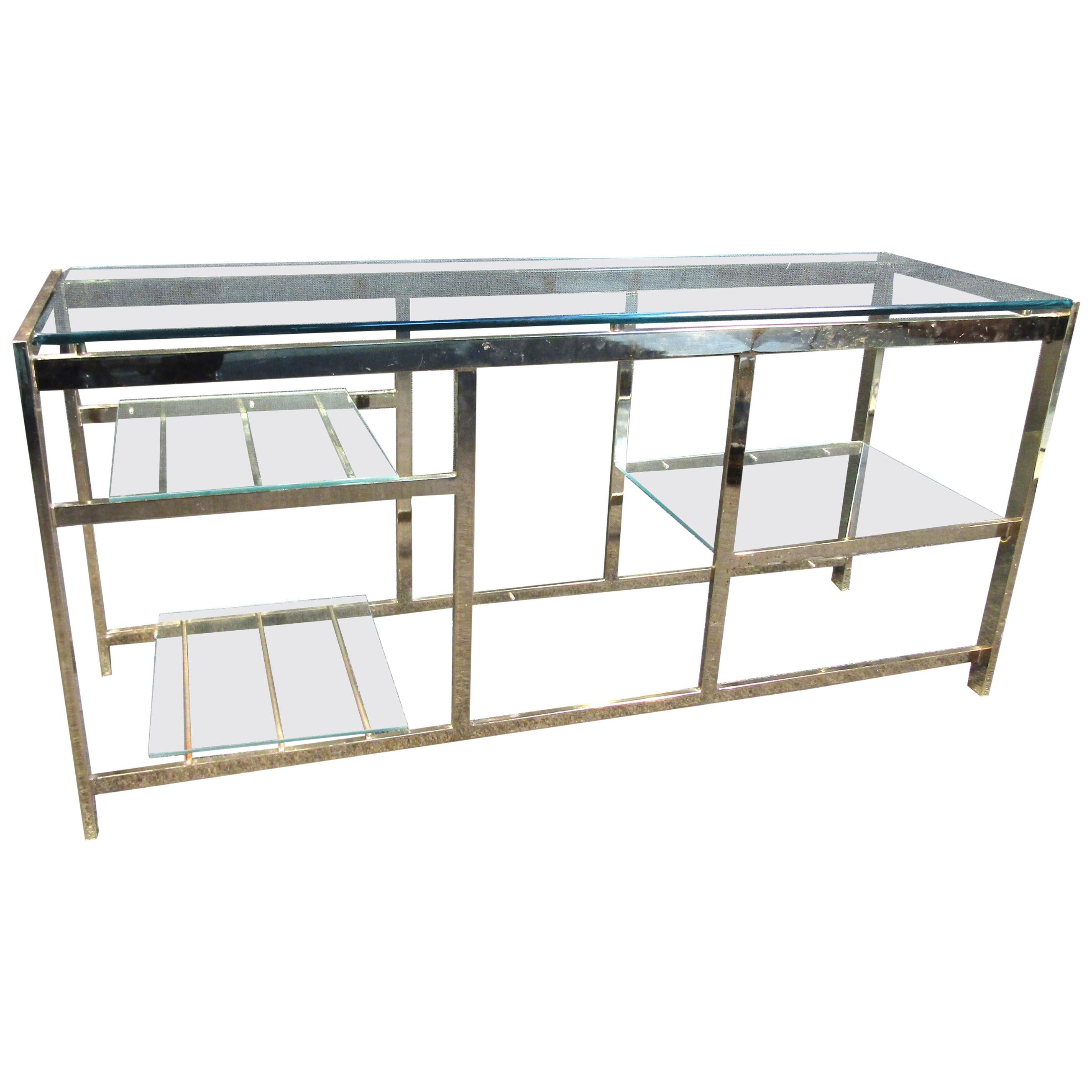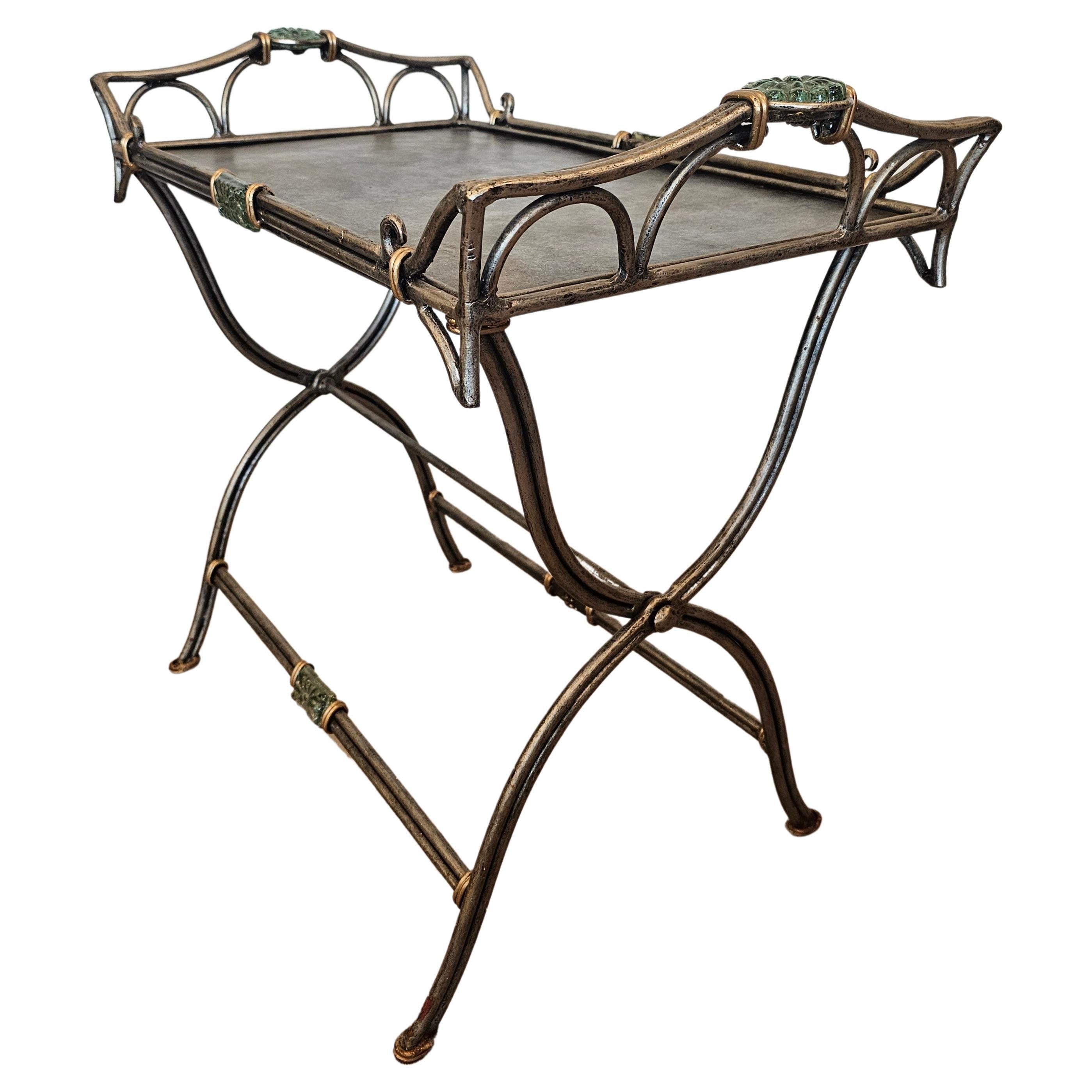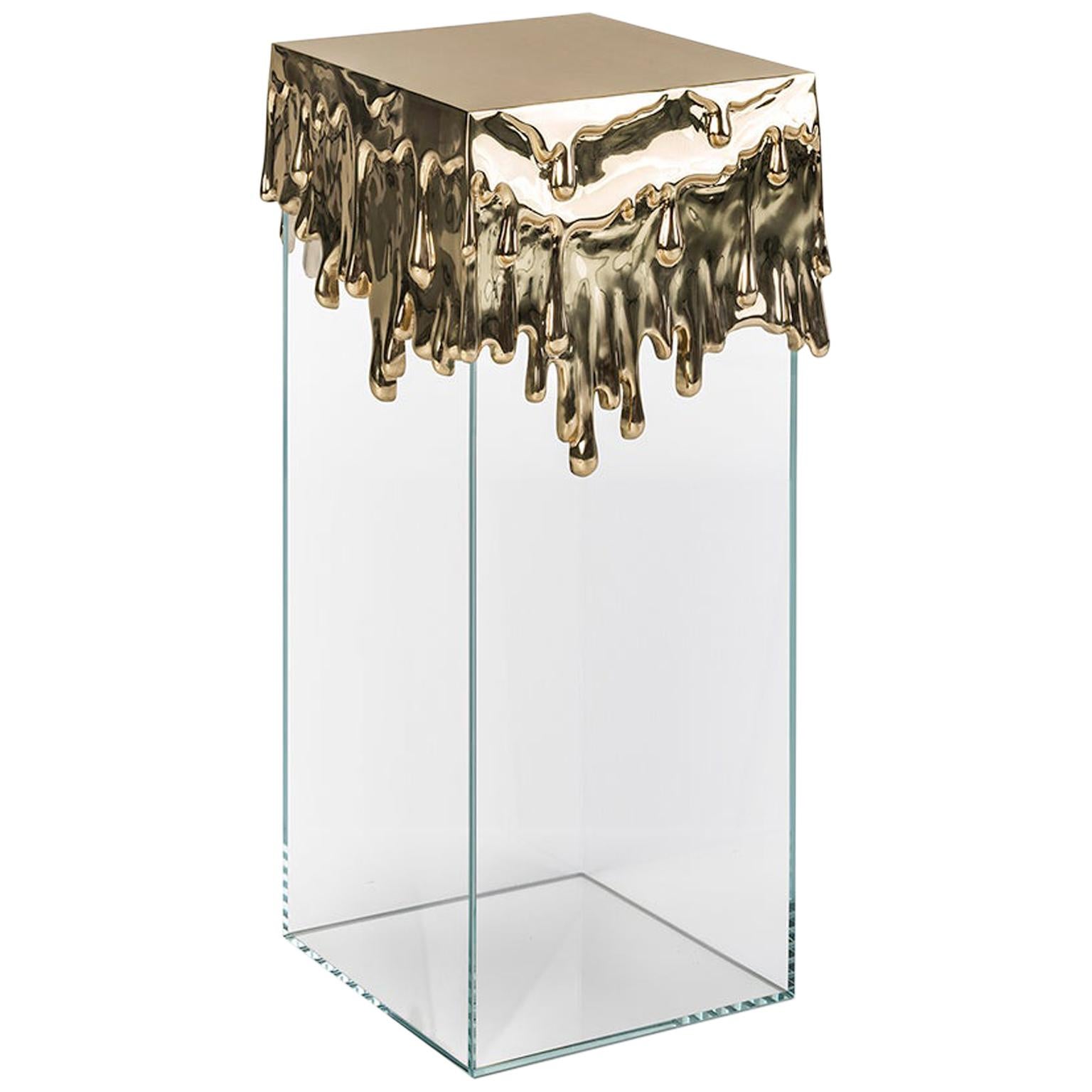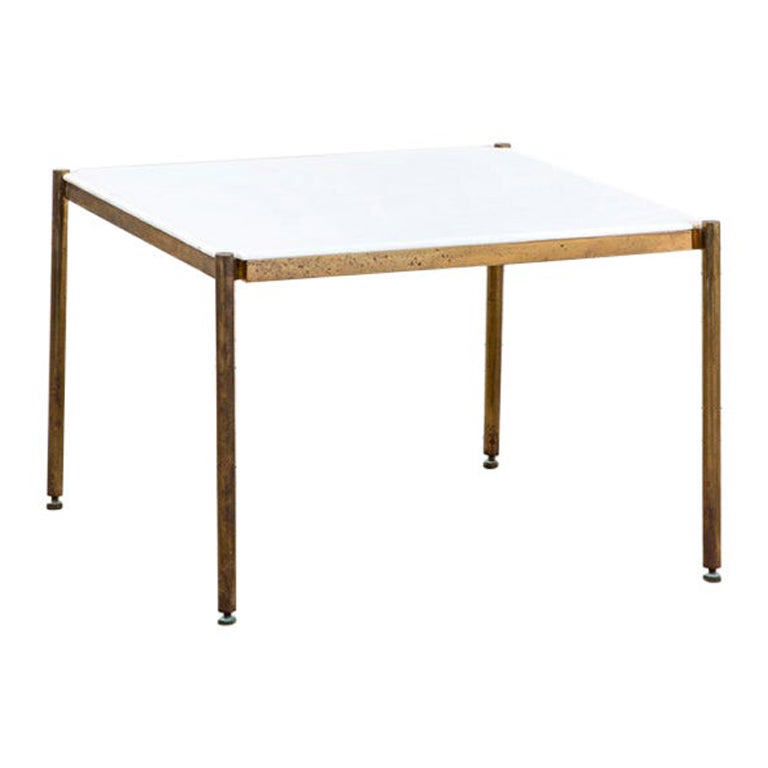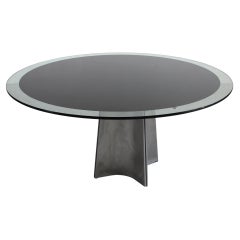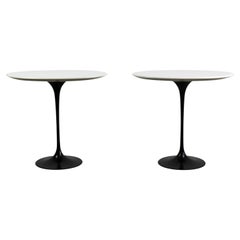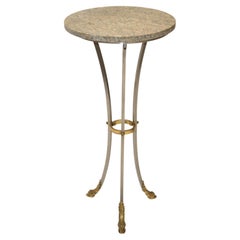
Valeria Borsani Service Table from ABV Series for Tecno 1991 in Metal and Glass
View Similar Items
Want more images or videos?
Request additional images or videos from the seller
1 of 6
Valeria Borsani Service Table from ABV Series for Tecno 1991 in Metal and Glass
About the Item
- Dimensions:Height: 22.84 in (58 cm)Diameter: 15.75 in (40 cm)
- Style:Mid-Century Modern (Of the Period)
- Materials and Techniques:
- Place of Origin:
- Period:
- Date of Manufacture:Unknown
- Condition:
- Seller Location:Montecatini Terme, IT
- Reference Number:1stDibs: LU5304221855132
About the Seller
4.9
Gold Seller
These expertly vetted sellers are highly rated and consistently exceed customer expectations.
1stDibs seller since 2020
100 sales on 1stDibs
More From This SellerView All
- Luigi Saccardo UFO Pedestal Table in Steel and Glass by Maison Jansen 1970sBy Maison Jansen, Luigi SaccardoLocated in Montecatini Terme, ITRound pedestal dining table model UFO with a base in brushed steel and tabletop in thick glass with a black enamel decorative circle. Designed by Luigi Saccardo and manufactured by Maison Jansen in the 1970s. Maison Jansen was a Paris-based interior decoration office founded in 1880 by Dutch-born Jean-Henri Jansen. From its beginnings, Maison Jansen combined traditional furnishings with influences of new trends including Anglo-Japanese style, the Arts and Crafts movement, and Turkish style. The firm paid great attention to historical research with which it attempted to balance clients' desires for livable, usable, and often dramatic space. Within ten years the firm had become a major purchaser of European antiques, and by 1890 had established an antique gallery as a separate firm that acquired and sold antiques to Jansen's clients and its competitors as well. In the early 1920s Jean-Henri Jansen approached Stéphane Boudin, who was then working in the textile trimming business owned by his father and brought him on board. Accounts of the arrangement vary. Speculation existed that Boudin was able to provide financial solvency to the prominent but capital-poor atelier. Boudin's attention to detail, concern for historical accuracy, and ability to create dramatic and memorable spaces brought increasing new work to the firm. Boudin was made director and presided over an expansion of the firm's offices and income. Not originally equipped with its own workrooms for producing furniture the firm began by relying upon antiques and the furniture contracted to outside cabinetmakers. By the early 1890s Maison Jansen had established its own manufacturing capacity producing furniture of contemporary design, as well as reproductions, primarily in the Louis XIV, Louis XVI, Directoire, and Empire styles. Throughout the firm's history, it employed a traditional style drawing upon European design, but influence of contemporary trends including the Vienna Secession, Modernism, and Art Deco has also appeared in Jansen interiors and in much of the custom furniture the firm produced between 1920 and 1950. Under Boudin's leadership, Maison Jansen provided services to the royal families of Belgium, Iran, and Serbia; Elsie de Wolfe, and Lady Olive Baillie's Leeds Castle...Category
Vintage 1970s French Mid-Century Modern Pedestals
MaterialsSteel, Iron
- Eero Saarineen Set of Two Black and White Low Tables in Wood and Aluminum 1990sBy Eero SaarinenLocated in Montecatini Terme, ITSet of two coffee tables with a black pedestal base in painted die-cast aluminum and an oval-shaped top in white lacquered wood. These two tables were manufactured in the 1990s in the style of the designer Eero Saarinen Eero Saarinen was a Finnish-born-American architect born on August 20, 1910. Son of an architect and sculptor, Eero went to public schools in Michigan and in 1929 joined Académie de la Grande Chaumière in Paris to study studied sculpturing. Later he studied architecture at Yale University from 1931 to 1934 and won a chance to travel around Europe and North Africa from 1934 to 1935. Eero started off his professional life from the United States by doing research about housing and city planning with the Flint Institute of Research and Planning in Michigan, in 1936. After working here for two years he joined his father’s firm in 1938. The first international recognition for Eero came during his collaboration with his father. It started off with a chair design and later in time, this duo of father and son managed to win many other competitions for their innovative designs and projects. Furthermore, he went on with furniture design for quite a long period of time. After the death of his father in 1950, Saarinen founded his own firm ‘Eero Saarinen & Associates’ in Birmingham, worked there until the time of his death in 1961. During this time he dedicated a huge chunk of his time for furniture design and other home furnishing design ideas. Some of his major architectural structures and contributions to the field of design are: the Bell Labs...Category
1990s European Post-Modern Pedestals
MaterialsAluminum
- Antonia Campi Tea Service for Six in Porcelain and Gold by Laveno 1950sBy S.C.I. Laveno, Antonia CampiLocated in Montecatini Terme, ITRare ceramic tea service for six in a very elegant light blue shade with decoration refined in pure gold, it was designed by Antonia Campi and manufactured by Laveno Ceramica in Verbano during the early 1950s. This set is composed of six (6) teacups, six (6) tea saucers, one (1) sugar bowl, one (1) teapot, and one (1) milk jug. Measurements: -Six cups 6 x 8 x 5.5 cm (each) -Sugar bowl 9 x 12 x 7 cm -Teapot 19 x 16, 5 x 9.5 cm -Milk Jug 11 x 12 x 7 cm. In 1856 Carlo Caspani, Alessandro Carnelli, and Severino Revelli, three employees of the Richard Ginori ceramics factory in Milano, set up the Società Ceramica C.C.R. making use of a disused building that had been a glass factory near the lakeshore. Production mainly consisted in fine earthenware and fire bricks. One of the key choices for the success of this initiative was an industrial-scale production of low-cost earthenware for domestic use. The manufacture of Laveno was gaining reputation; so that in 1869 part of its activity had to be moved to a new building called “Lago”. In 1883 it adopted a new denomination, Società Ceramica Italiana (with an S.C.I. trademark) that was to become famous. During this period, S.C.I. was led by bright managers: Tommaso Bossi and his successor Luciano Scotti, a graduate in engineering who led the company all the time from 1895 to 1956, raising it to its top level of capacity and production. In 1925 the Mulini plant was built in the Boesio area, where the blends and ''bodies'' were prepared. The Magazzini Generali (a warehouse), were also built and directly connected to the railway network. All the factory sites were interconnected by a “Decauville” railway for transporting materials. Also in 1925 the Verbano plant was built, following an agreement with the German Rosenthal company, for producing porcelain tableware and, later, ceramic insulators. The drive for innovation in production technologies, that took place during the Twenties, was accompanied by an equally intense artistic development. During the twenty's the architect Piero Portaluppi started collaborating with S.C.I. and thanks to Luciano Scotti’s foresight, young Guido Andlovitz, who had entered the company in 1923, was appointed art director in 1925, who introduced a renewal in the style of shapes and decorations, so that towards the end of the 1920s Ceramica di Laveno competed with Richard-Ginori, for the leading position in the ceramic art of Italy. Near the end of the 1930s, collaboration was started with Angelo Biancini, who created a new product line of artisan taste. In the late Forties, the young Antonia Campi joins the company as a decoration worker. Immediately, Guido Andlovitz notes her ability and potential qualities, and moves her into the artistic department. Starting with her 1948 first tiny vase...Category
Vintage 1950s Italian Mid-Century Modern Tea Sets
MaterialsGold
- Franco Albini TL30 Round Table in Metal and Wood for Poggi Pavia 1950s ItalyBy Poggi, Franco AlbiniLocated in Montecatini Terme, ITRound table model TL30 with black lacquered metal base and a wooden top. Designed by Franco Albini for Poggi, Pavia in 1950s. After spending his childhood and part of his youth in Robbiate in Brianza, where he was born in 1905, Franco Albini moved with his family to Milan. Here he enrolled in the Faculty of Architecture of the Polytechnic and graduated in 1929. He starts his professional activity in the studio of Gio Ponti and Emilio Lancia, with whom he collaborates for three years. He probably had his first international contacts here In those three years, the works carried out are admittedly of a twentieth-century imprint. It was the meeting with Edoardo Persico that marked a clear turning point towards rationalism and the rapprochement with the group of editors of “Casabella”. The new phase that that meeting provoked starts with the opening of the first professional studio in via Panizza with Renato Camus and Giancarlo Palanti. The group of architects began to deal with public housing by participating in the competition for the Baracca neighborhood in San Siro in 1932 and then creating the Ifacp neighborhoods: Fabio Filzi (1936/38), Gabriele D’Annunzio and Ettore Ponti (1939). Also in those years Albini worked on his first villa Pestarini. But it is above all in the context of the exhibitions that the Milanese master experiments his compromise between that “rigor and poetic fantasy” coining the elements that will be a recurring theme in all the declinations of his work – architecture, interiors, design pieces . The opening in 1933 of the new headquarters of the Triennale in Milan, in the Palazzo dell’Arte, becomes an important opportunity to express the strong innovative character of rationalist thought, a gym in which to freely experiment with new materials and new solutions, but above all a “method”. Together with Giancarlo Palanti, Albini on the occasion of the V Triennale di Milano sets up the steel structure house, for which he also designs the ‘furniture. At the subsequent Triennale of 1936, marked by the untimely death of Persico, together with a group of young designers gathered by Pagano in the previous edition of 1933, Franco Albini takes care of the preparation of the exhibition of the house, in which the furniture of three types of accommodation. The staging of Stanza per un uomo, at that same Triennale, allows us to understand the acute and ironic approach that is part of Albini, as a man and as a designer: the theme addressed is that of the existenzminimum and the reference of the project is to the fascist myth of the athletic and sporty man, but it is also a way to reflect on low-cost housing, the reduction of surfaces to a minimum and respect for the way of living. In that same year Albini and Romano designed the Ancient Italian Goldsmith’s Exhibition: vertical uprights, simple linear rods, design the space. A theme, that of the “flagpole”, which seems to be the center of the evolution of his production and creative process. The concept is reworked over time, with the technique of decomposition and recomposition typical of Albinian planning: in the setting up of the Scipio Exhibition and of contemporary drawings (1941) the tapered flagpoles, on which the paintings and display cases are hung, are supported by a grid of steel cables; in the Vanzetti stand (1942) they take on the V shape; in the Olivetti store in Paris (1956) the uprights in polished mahogany support the shelves for displaying typewriters and calculators. The reflection on this theme arises from the desire to interpret the architectural space, to read it through the use of a grid, to introduce the third dimension, the vertical one, while maintaining a sense of lightness and transparency. The flagpole is found, however, also in areas other than the exhibition ones. In the apartments he designed, it is used as a pivot on which the paintings can be suspended and rotated to allow different points of view, but at the same time as an element capable of dividing spaces. The Veliero bookcase...Category
Vintage 1950s Italian Mid-Century Modern Dining Room Tables
MaterialsMetal
$2,446 Sale Price20% Off - Set of Two Wall Lamps in Yellow and Beige Lacquered Metal and Glass by G.C.M.EBy G.C.M.ELocated in Montecatini Terme, ITSet of two wall lamps (they can also be used as ceiling lamps as well) with structure in lacquered metal (one is in a beige shade and one is in a brilliant yellow shade) stamped glas...Category
Vintage 1950s Italian Mid-Century Modern Wall Lights and Sconces
MaterialsMetal, Brass
- Two Wall Lamps in Red and Blue Lacquered Metal and Glass by G.C.M.E. 1950s ItalyBy G.C.M.ELocated in Montecatini Terme, ITSet of two wall lamps (they can also be used as ceiling lamps as well) with structure in lacquered metal (one is in a light blue shade and one is in a brilliant red shade) stamped gl...Category
Vintage 1950s Italian Mid-Century Modern Wall Lights and Sconces
MaterialsMetal, Brass
You May Also Like
- 19th century American Tripod TableLocated in Savannah, GAUnusual rectangular shaped. American tripod table with original working mechanism. The exquisitely grained top is one piece of mahogany and shape...Category
Antique 1810s American Federal Pedestals
MaterialsMahogany
$1,259 Sale Price49% Off - American Mahogany Two Tiered Supper Table. Circa 1840Located in Hollywood, SCAmerican mahogany two tiered supper table with brass decorative column supports, reeded and turned tripod pedestal, and terminating on original brass casters. Early 19th CenturyCategory
Antique 19th Century American American Classical Serving Tables
MaterialsBrass
- Maison Jansen French Neoclassical Steel & Bronze Hoof Feet Pedestal Drink TableBy Maison JansenLocated in Miami, FLNeoclassical French drink table maison jansen style steel, brass & bronze hoof feet with a round sand color travertine top. The natural taupe color 1-inch...Category
Mid-20th Century French Neoclassical Pedestals
MaterialsTravertine, Brass, Bronze, Steel
- Pair of Polished & Rough Stone Tiles Cone Shape Non Matching Pair of PedestalsBy Maitland SmithLocated in Rockaway, NJPair of polished & rough stone tiles cone shape non matching pair of pedestals small: 14 × 36 tall : 14 x 43.Category
20th Century American Mid-Century Modern Pedestals
MaterialsStone, Marble
- Brass & Marble Decorative Ornate Round Pedestal Stand Mint!Located in Rockaway, NJBrass & marble decorative ornate 37" tall round pedestal stand mint!Category
20th Century American Mid-Century Modern Pedestals
MaterialsMarble, Brass
- Bar Trolley for Tecno 1970sBy TecnoLocated in Lasne, BEFurniture on casters stamped Tecno. Wear due to time and age of the furniture. Leather and wood covering.Category
Vintage 1970s Italian Mid-Century Modern Serving Tables
MaterialsWood
